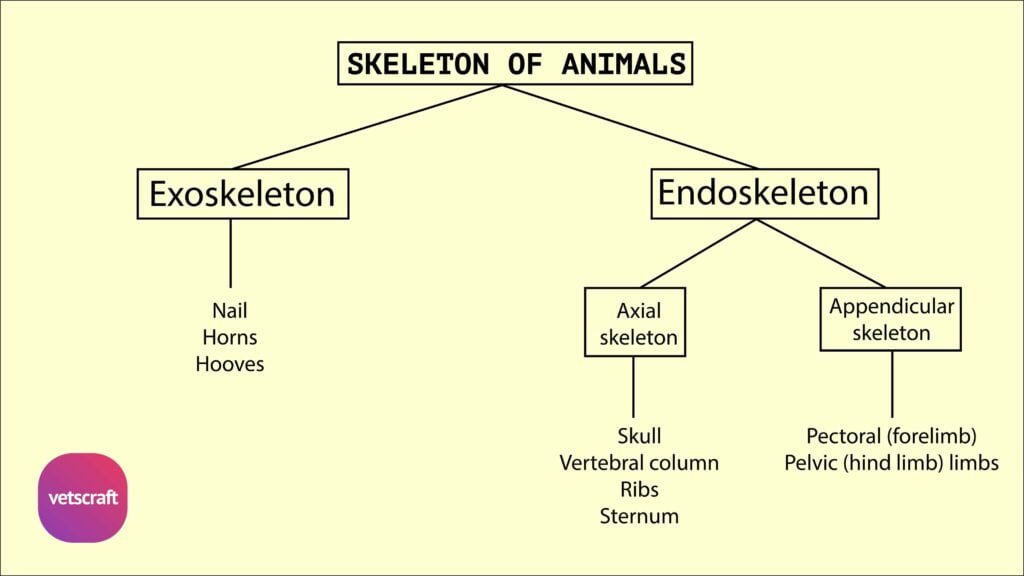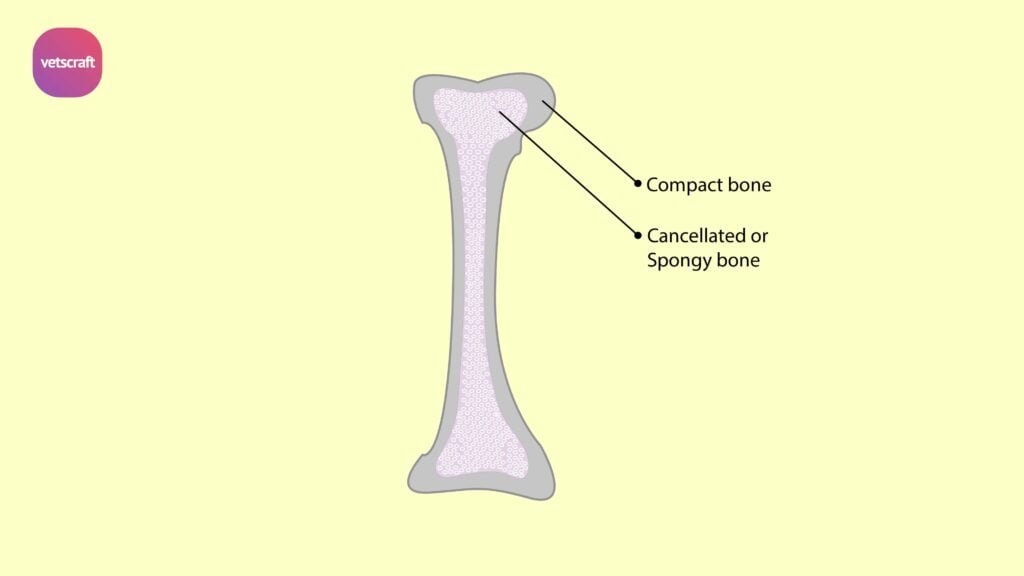TABLE OF CONTENTS
Ox
- The nasal cavity is a longitudinal passage, which extends in life from the anterior nares or nostrils to the posterior nares, which open into the naso pharynx.
- It is divided into right and left halves by a median septum nasi.
- The turbinate bones divide each half of the cavity into three meatus nasi: dorsal, middle and ventral.
- The dorsal wall or roof of nasal cavity is formed by the nasal and frontal bone.
- The lateral walls are formed by pre-maxilla, maxilla, perpendicular part of palatine and turbinate bones.
- The ventral wall or floor is formed by the palatine process of premaxilla, palatine process of maxilla and the horizontal part of palatine bones.
- The septum nasi is formed above by the perpendicular palate of ethmoid continued in front by the septal cartilage and below by the vomer. The septum does not reach the floor posteriorly. So that the cavity here is incompletely divided.
- The posterior nares or chonae are narrow and bounded laterally by the pterygoid and perpendicular part of palatine and it is separated into two halves only in its upper part by vomer.
Horse
- The nasal cavity and the posterior nares are completely divided, as the vomer meets the nasal crests of the palatine and maxilla.
Dog
- The nasal cavity conforms to the shape of the face.
- The turbinates occupy the cavities to a large extent.
- The posterior part of the cavity is divided by the lamina transversalis into an upper olfactory region and a lower naso pharyngeal meatus.
- The posterior nares are undivided.

